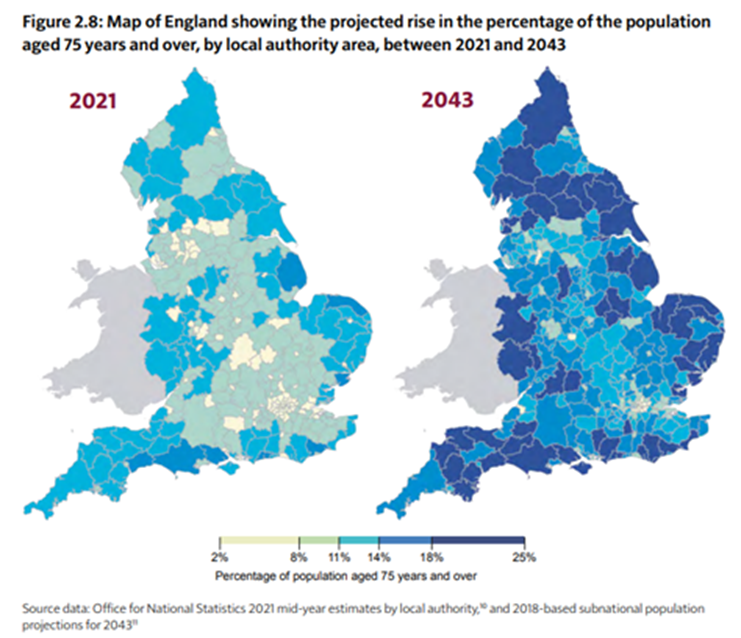T: 01822 851370 E: admin@sparse.gov.uk
RSN Chief Exec: “Lack of government funding has created a rural ticking time bomb.”

The Rural Services Network Chief Executive, Kerry Booth, considers Professor Whitty’s new report which urges the government to address failings for older people in rural communities.
Today the government’s Chief Medical Officer, Professor Chris Whitty, has published his annual report. This year he has focused on health in an ageing society. In it he says:
“For policymakers, the biggest concern I have is that government and professional bodies have not recognised the degree to which the population living in older age is concentrating geographically in the United Kingdom in general, and England specifically. The great majority of people move out of cities and large towns before older age, concentrating geographically in coastal, semi-rural or peripheral areas, often with relatively sparse services and transport links.”
It goes on to set out the challenges facing the aging rural population including the difficulty in recruiting staff in the social work and domiciliary care sector to look after these communities. It attributes these problems to high property prices in rural areas, poor public transport, high fuel costs and higher demands from the quantity of patients. The report warns that “if we do not tackle the health problems of these communities vigorously and systematically there will be a long tail of preventable ill health in peripheral areas which will get worse as current populations age.” All of this is true – and those of us working in, and with, rural communities, have seen it coming for years. ONS figures have shown that the rural population is aging faster than the urban one. These new projections have just made the picture starker and the need to address it more urgent:
 |
The government’s answer is the NHS Long-term Workforce Plan. Yes, having a plan is important. But as always, it can’t be one-size fits all. Rural areas have specific needs, and they require tailored solutions. What is more, this is about the wider picture; reliable and regular public transport, affordable and appropriate housing, consistent digital connectivity and a thriving local economy. All this is based on the right infrastructure and the right funding. And that boils down to having a plan for rural areas.
Professor Whitty talked in his media interviews about ‘old fashioned answers’ like proper exercise and diet, alongside access to social and mental stimulation. This means modern leisure centres, accessible museums, libraries and cultural venues and reliable public transport to get people there. What I want to know is: who is paying for all this? Local authorities in rural areas, don’t have the budget to spend on discretionary services. This year urban councils have budgeted to spend twice that of rural councils on discretionary services, which is simply unfair. They receive 38% (£135) MORE in Government Funded Spending Power per head compared to rural authorities. Furthermore, more people living in urban areas have public transport options to get them there. Rural authorities are struggling with rising costs and less money coming from government, so investing in things like leisure and culture facilities doesn’t happen because the money rightly goes on keeping our most vulnerable safe. But why should rural miss out?
Two years ago Professor Whitty published his annual report entitled Health in coastal communities. It focused on health in coastal communities and they crisis they face. But what has the government done to address the recommendations? It hasn’t addressed the way our rural communities have changed and it’s still not preparing for what is to come. This is a ticking timebomb and the government must act: now.
YOU MAY ALSO BE INTERESTED IN
SIGN UP TO OUR NEWSLETTER
Sign up to our newsletter to receive all the latest news and updates.









